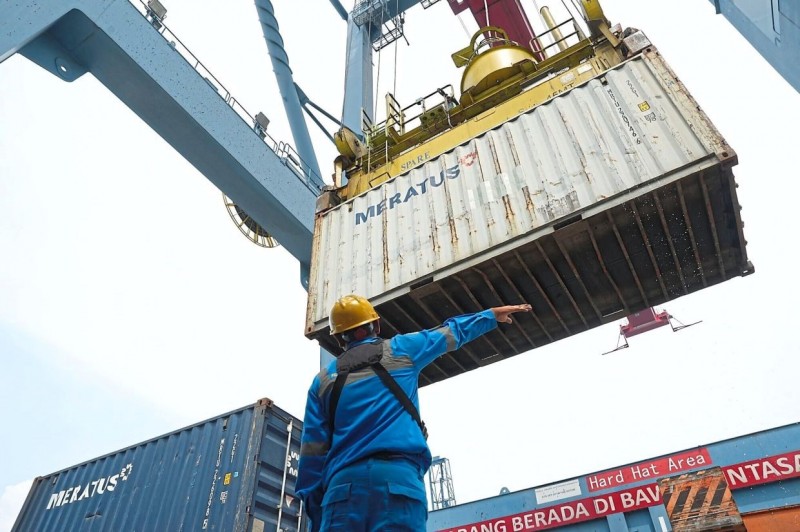
IN the two years since the Regional Comprehensive Economic Partnership (RCEP) agreement came into effect, a new regional cooperation architecture featuring shared dividends and common development has taken preliminary shape.
Building the RCEP trade area into a big and high-level regional market will not only help boost regional and global economic growth, but also stabilise the global economy which faces increasing uncertainties.
The past two years have seen significant growth in trade and investment among the RCEP member countries, which has helped further integrate the industry and supply chains, thus accelerating overall regional economic integration.
By boosting regional trade, promoting intra - regional investment and further integrating the regional industry and supply chains, the RCEP has unleashed significant trade and investment dividends and bolstered regional economic growth.
The RCEP, in fact, has the potential to greatly boost trade and investment growth in the future.
By focusing on helping less-developed economies to participate more conveniently in the regional market so they can enhance their economic competitiveness, the RCEP has been vitalising the regional market.
For example, in 2022, Laos and Myanmar increased their intra-region trade volume by 28.13% and 13.68% year – on - year respectively, which contributed to 2.7% and 3.8% of their respective gross domestic product (GDP) growth.
Besides, the rapid growth of trade and investment between China and Asean member states is the biggest highlight of trade and economic exchanges under the framework of the RCEP.
Asean has been the leading player in the RCEP, with China being the most important promoter of the regional free trade agreement.
The trade volume between China and Asean in 2023 increased by 4.9% compared with that in 2021, the year before the RCEP came into effect.
It can be hoped, therefore, that the continuous release of RCEP dividends will help further integrate China - Asean industry and supply chains and expedite the regional economic integration process.
Objectively speaking, since some member states are yet to implement all the RCEP rules, there is a need to ensure they do so, in order to further enhance the vitality of RCEP’s large regional market.
There is also a need to improve the implementation of rules of origin, so as to unleash more RCEP dividends.
The next five to 10 years will be a period of rapid economic growth for Asean and an important period for the structural transformation and upgrading of the Chinese economy.
To fully unleash their growth potential, it is necessary that China and Asean work together to eliminate non-tariff barriers and ensure their enterprises implement the RCEP rules.
The huge market size of the RCEP region, combined with its institutional arrangements for trade and investment liberalisation and facilitation, will continue to unleash tremendous economic growth momentum.
In fact, the International Monetary Fund has predicted that the RCEP region’s GDP could grow by US$10.9 trillion from 2023 to 2029, about 1.4 times and 2.6 times the GDP growth of the United States and the European Union during the same period.
Focusing on the future and surpassing traditional free trade agreements, the RCEP could build its trade area into the largest regional market by helping further integrate the member states’ industry, supply and value chains, aligning the rules and standards with those of the member states and increasing people-to-people exchanges.
This in turn will accelerate regional economic integration and build the world’s largest high-level free trade area.
Jointly building a region with the most dynamic growth in the world requires the sincere implementation – as well as upgrading – of RCEP rules.
For instance, RCEP rules of origin should be upgraded from “partial accumulation” to “full accumulation”, and “national tariff reduction” to “unified tariff reduction”.
Since the RCEP agreement emphasises the need to be “open for accession by any country or any separate customs territory”, the accession of the Hong Kong Special Administrative Region to the free trade agreement can play a unique role in expanding and benefiting the RCEP regional market.
And following the principle of openness, research and communication issues that India had raised should be improved, and renewed efforts made to persuade India to rejoin the RCEP.
Furthermore, China is advancing its high-level opening-up, injecting new impetus into the regional economy and boosting the RCEP’s large market.
Despite facing challenges including some Western economies’ sanctions and their efforts to “decouple” from the Chinese economy, China has continued to integrate in the global industry and supply chains, and make great efforts to maintain free trade.
In the next 10 to 15 years, China’s transformation will create a huge market space, which will inject new vitality into the regional economy, promoting regional growth and strengthening the RCEP market.
Source: https://www.thestar.com.my/business/insight/2024/05/30/building-rcep-region-into-a-huge-market

